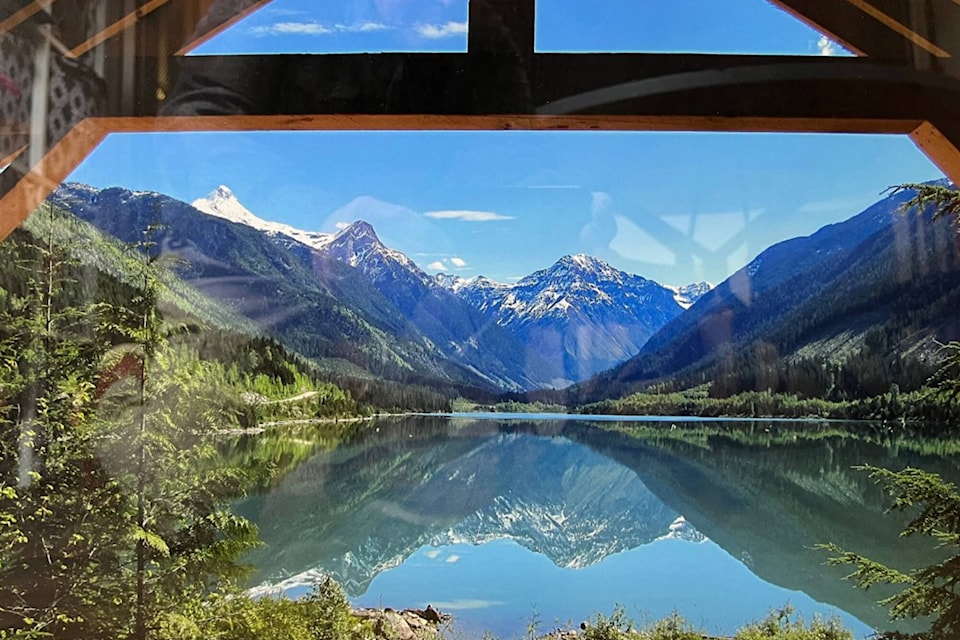Having enough healthy food for everyone is not the responsibility of one person or one group.
Partnerships at all levels are what’s needed, says Mike Moyer, the Adams Lake band’s community safety director, referring to what he’d like to see the wider community doing.
“It’s not one person’s or local government’s issue to address – it’s local, it’s provincial, it’s federal, it’s individuals, it’s everybody – everybody is a part of the solution. If you’re not part of the solution you’re part of the problem. At the end of the day we all play a part in it.”
An example of a helpful initiative that ended was in the past couple of years when one of the food banks would donate extra supplies to the reserve. They were given out to families that were challenged or were just short for the month, he said. That continued until about eight to 12 months ago.
“They stopped that. Why – because the need outstripped their resources and they couldn’t do that any more.
“When you had families who every Friday knew there was a little extra – an extra loaf of bread or a jug of milk – or something that was available that was distributed to the community and then it’s abruptly stopped, it’s a major hurt to the community.
“I mean we totally understand, we respect that everybody is in need, but the food bank had just been outstripped by the high intake they were experiencing in the City of Salmon Arm…
“It (the food) was a nice touch and people really appreciated it. That was out-of-the-box kind of thinking but unfortunately they had to bring it to an abrupt halt…”
Read more: 40-plus interviews help Shuswap playwright create story of Indigenous language survival
When thinking about food sovereignty for First Nations, Moyer emphasized it’s important to consider history.
“Canadian colonial policies wiped out our traditional food sources and contained us to designated postage stamp-sized parcels of land called reserves,” he said, referring to vast land areas where Indigenous people could hunt animals and gather traditional foods and medicines.
“If you look, the majority (of reserves) are on poorly aerated and sloped land with limited fertility for food options. The land that nobody else really wants to farm.
“Then they dissected these reserves further. A lot of reserves have pipelines throughout, rail lines, roadways and hydro or transmission lines running right through the middle of the reserve.”
“Then you see colonial hunting laws imposed on traditional territories, which limits our access to our traditional game. If we practised hunting and gathering the way we did in the past, you take the risk of colonial consequences.”
Culturally, story telling and ceremonies to promote the language and cultural ways were being taught during hunting and gathering.

Food was a form of money and trade, Moyer said. “Our monetary system has been severely impacted.”
Coastal people, for example, would trade cedar for the Secwépemc people’s salmon, or Secwépemc people would trade salmon for buffalo hides from communities to the east.
Then there were residential schools, where survivors were subject to poor nutrition and, in some cases, starvation. Survivors have been documented speaking about the constant hunger in the schools.
Read more: ‘Spirit of reconciliation’: Landmark at Salmon Arm wharf creates awareness of Secwépemc presence
Moyer noted it is this history that leads to the approaches being taken and the issues being faced.
Several initiatives are underway. Among them, a trap line was recently purchased in traditional territory near Revelstoke where trapping courses are being hosted to bring back the teachings. A greenhouse has been created which can be used to start trees, but also vegetable seedlings.
Some community members still hunt and fish for the community, although distances and gas prices are an obstacle.
Bulk buying is a new initiative being started. Partnerships have been set up with some local farmers who either donate or give a discount to community members when they have bumper crops.
“There is really a vast difference between the haves and have nots,” Moyer pointed out.
“It’s finding all the unique solutions to a complex problem that takes a whole logical conversation and being able to sit down and find ways that are going to be acceptable for everybody. It’s going to take different people to step up and make that effort.
He said more work needs to be done to improve the collective First Nations situation, and to address the 94 Calls to Action released in 2015. A little more than a tenth of those calls have been completed.
“It’s important to highlight these and many other issues because First Nations, and especially our community, we’re very proud, but we also have a lot of challenges that we need to overcome.”
He said the Adams Lake Kukpi7 (chief) and council are very supportive of any initiatives that can better the community. “It’s just going to need time from all levels of government and also the broader community to be able to provide a hand in moving us forward.”
Read more: Adams Lake First Nation elects new chief, council
Read more: Raising of Secwepemculecw flag at Salmon Arm campus recognizes history
martha.wickett@saobserver.net
Like us on Facebook and follow us on Twitter and subscribe to our daily newsletter.
